Welcome to last and final week of the Trumpeter 1/350 USS Hornet CV-8 Project!
This is going to be a huge update. I am breaking in up into 3 sections due to the details and number of photos. The first section is adding the figures and aircraft to complete the ship. The second section will be on making the “At Sea” base. The last section is the photos of the completed project. At the bottom is a list of all the accessories that were used to create this project.
Section 1 – The crew and aircraft loaded aboard. All of the figures used on the flight deck and island are the 3-D printed figures. I separated them into four groups. The four groups are Enlisted Navy, Navy Officers, USAAF enlisted, and the brave USAAF pilots of the Doolittle Raiders. I also added a Moto-tug with a tow bar. The figures come in various poses. It even gave me to sailors using binoculars as lookouts. These were placed on the front of the island at the level just above the bridge. There are two crew members removing the tow bar for storage as well as the USAAF pilots talking on the flight deck. The aircraft were then staged on the deck in their launch order. Doolittle’s aircraft leads the group. I staged them as they were when they were leaving San Francisco Bay. I picked this particular point in time as it was the last time the hangar deck doors would have been open. Once the ship was out to sea the hangar doors would be closed.

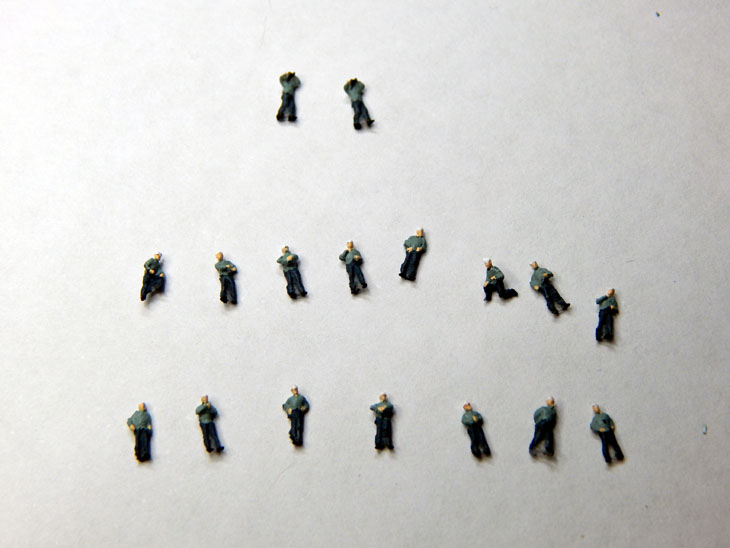

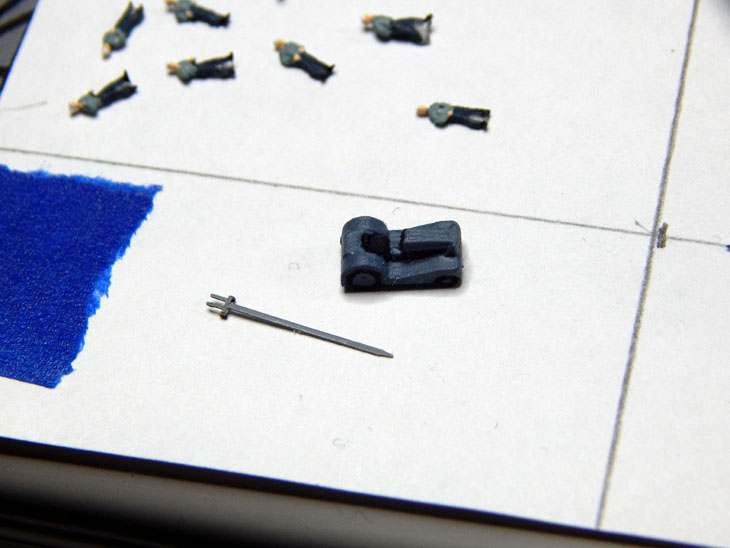
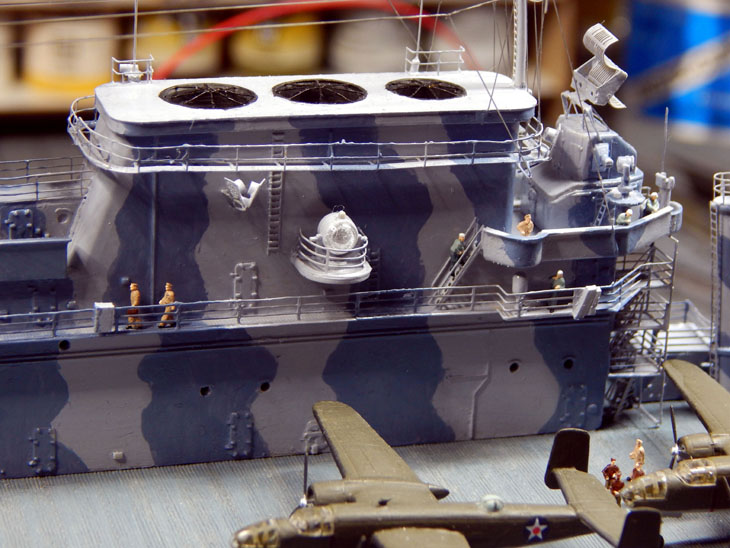
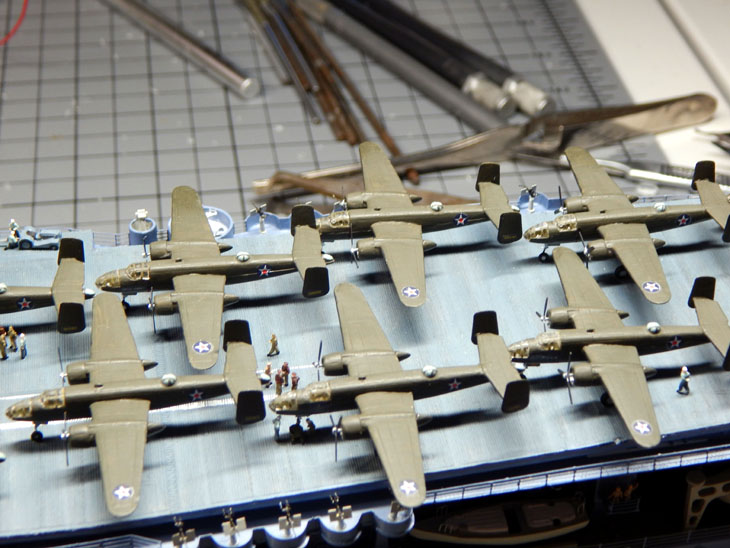

Section 2 – Creating the base. I used two sheets of 1/8” sheet styrene. The sheets are 24” long and 12” wide. After gluing the sheets end to end I trimmed it back to 33” long. Side note: I gave these measurements to Ron and Grandpa’s Cabinets so that the case would hold the base inside the acrylic cove. As usual, Ron’s artistry in making quality display cases was right on. The base fit perfectly inside the cover.
Moving forward, I mixed up some milliput putty to create the bow wake as well as the trailing wake. I then sprayed the base colors. I use dark sea blue on the open areas, regular blue closer to the ship, and intermediate blue for the wakes. I began laying the first coat of acrylic gel. I used a round brush typically used for applying eye makeup. When applying the acrylic gel it is best to make the strokes horizontal to the ship. This gives the waves an even direction. For the trailing wake I dabbed the acrylic gel vertically. The ship model was the glued to the base. The second coat of acrylic gel was then laid down. This coat was to build up the bow wake as well as the splashing along the hull. I also did some vertical dabbing around the bow to give the surface the splashed look from the bow. The third and final coat of acrylic gel was mostly the aft wake to build up the sides even with the hull. After the acrylic gel was fully cured the surface was then painted using Tamiya X-23 clear blue gloss. This gives the “water” a Pacific blue tone as well as blending the three shades of blue. Once dry, I then used Tamiya XF-2 flat white to paint the top of the wakes. The white was then dry brushed on surrounding wave detail near the wake. White was finally dry brushed vertically on the bow spray and the aft wake. Then using the same large brush I used to apply the acrylic gel I dipped it in thinner and lightly brushed all the white areas. This blended the white and clear blue giving various shades of blue and white for the visual effect of the wakes. Finally, once everything was dry I used Pledge Floor coating over all the water to give it a super high gloss (wet look). I then applied a second coat along the bow and used fiber fill (like what is used in stuffed animals or throw pillows) to create the bow splashing the water. I then lightly sprayed some Pledge onto the fibers to add water droplets. This completed the base! Later this coming week I will make a Tips and Tricks page on creating the sea base for anyone who would like to use this method.
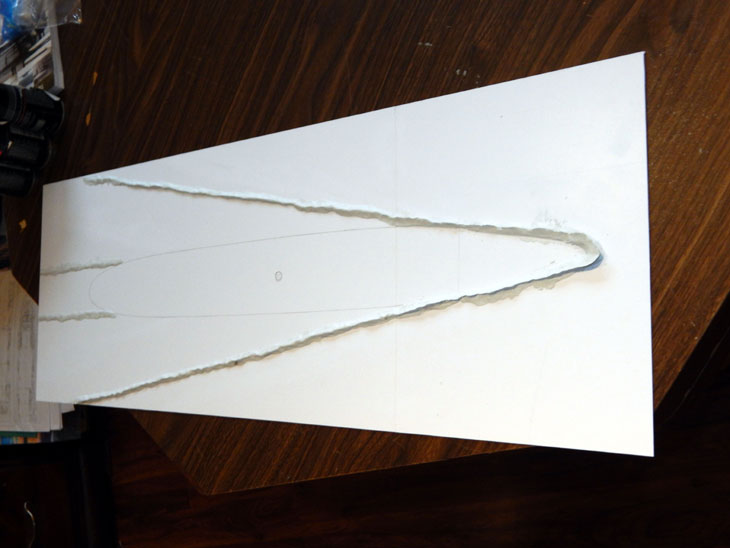
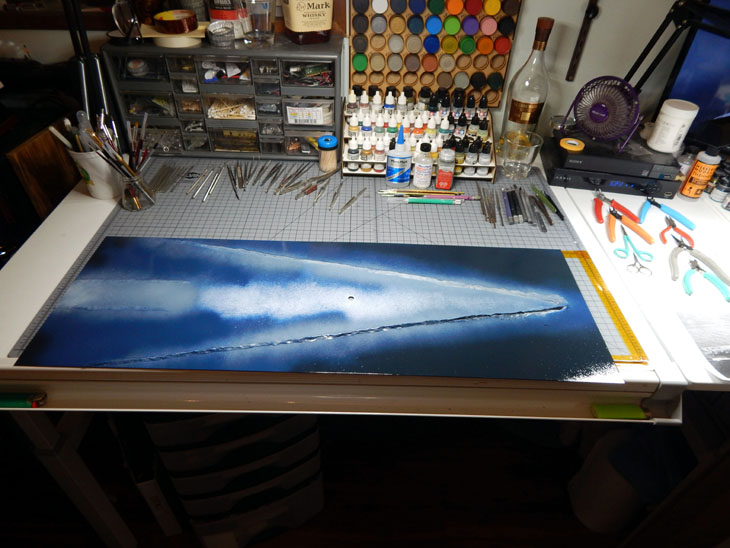
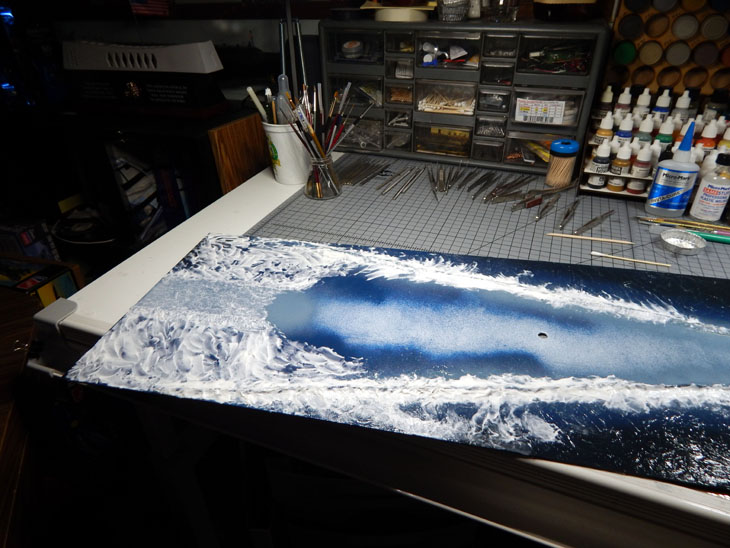
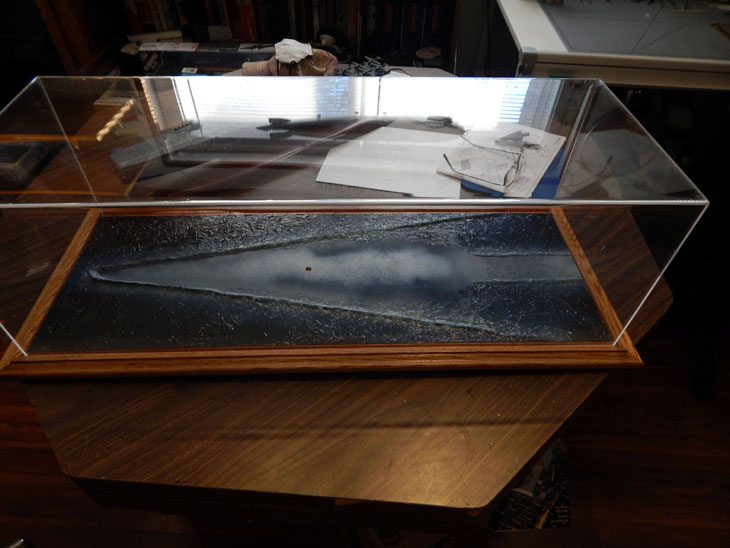
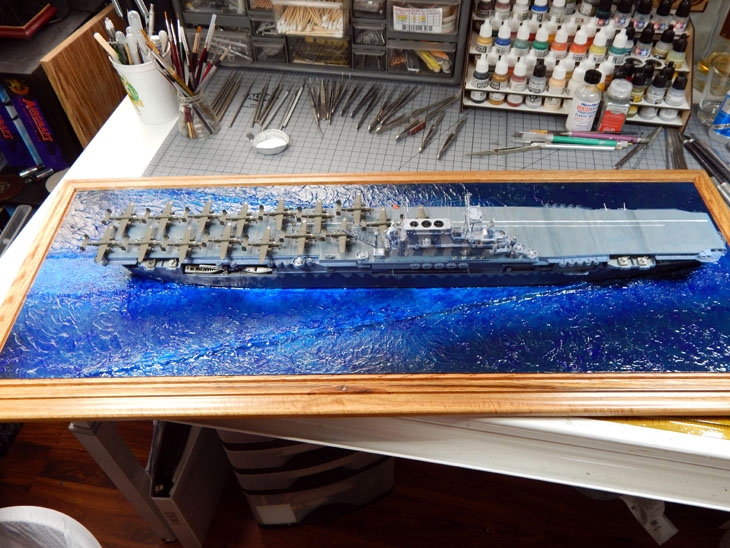
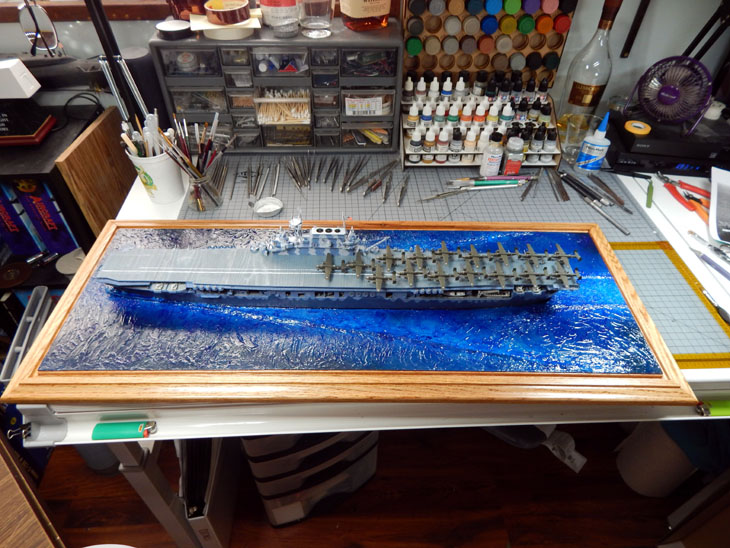

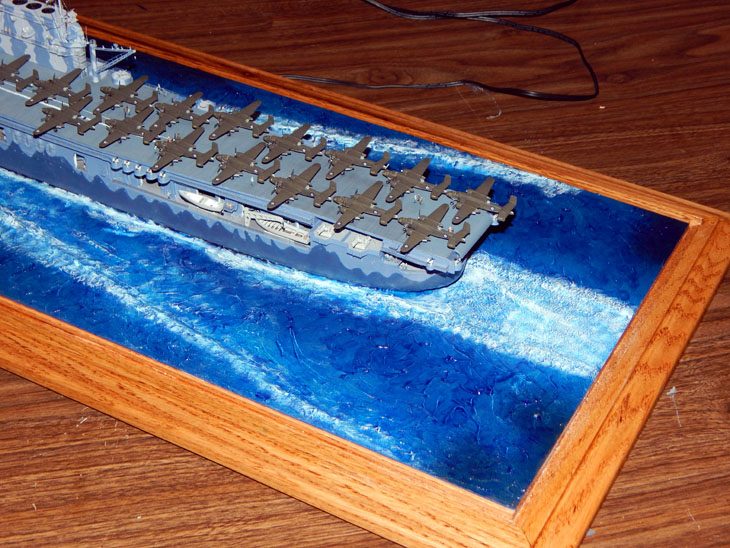
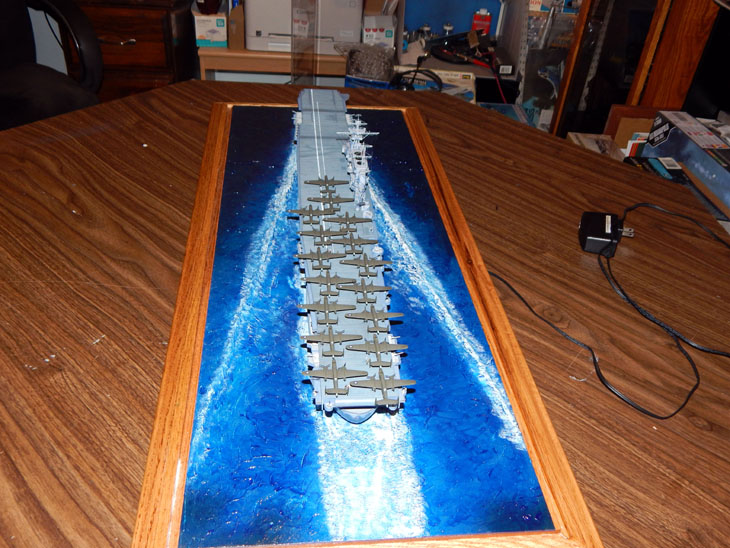

And now the final section – I added a jack under the base so I can plug in the AC/DC adapter to supply power to the LED’s. I then took some sheet styrene and made a mount to hold the brass nameplate. The clear cover was then placed over the ship completing the ship. This project took approximately 30 weeks and 660 hours to build. The kit itself while not quite accurate in the bow section went together very well. The extensive amount of photo etch really brings out the details. Adding the crew figures was a first for me. I prefer the 3-D printed figure more than the Tamiya crew figures. The 3-D figures look way more realistic and have many different poses. The lookouts, The figures that are walking up stairs, and some figures kneeling are just some of the poses that worked out well. The Doolittle Raiders Aircraft decals that I made worked out very well. Once I get the page set up I will be offering these decals in both 1/350 and 1/200 scale. I have also scheduled a photographer to take some professional photos next week. For now below are the final photos I took. I also included a list of all the accessories used on this project and a short video of the completed ship which can be seen in my build log.
I want to thank all my fans and viewers for following along on this long highly detail build. I hope you have enjoyed watching this build. Take Care and happy modeling!